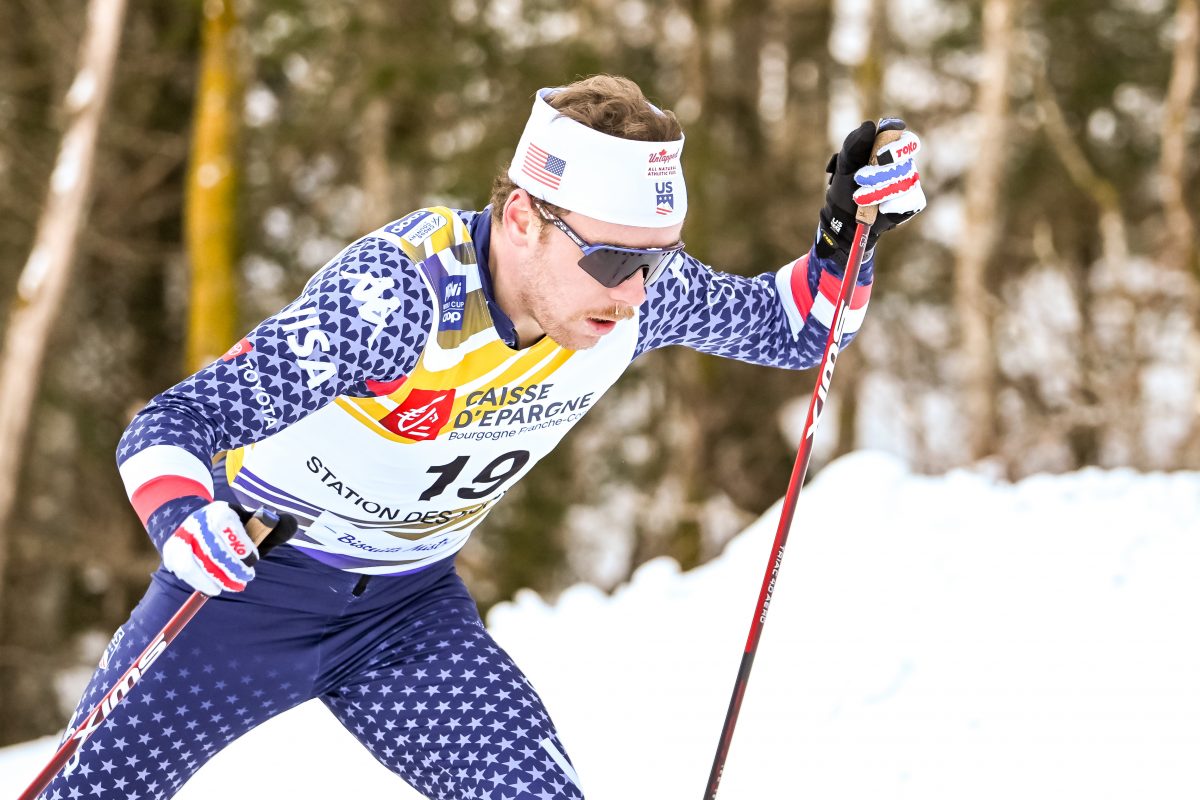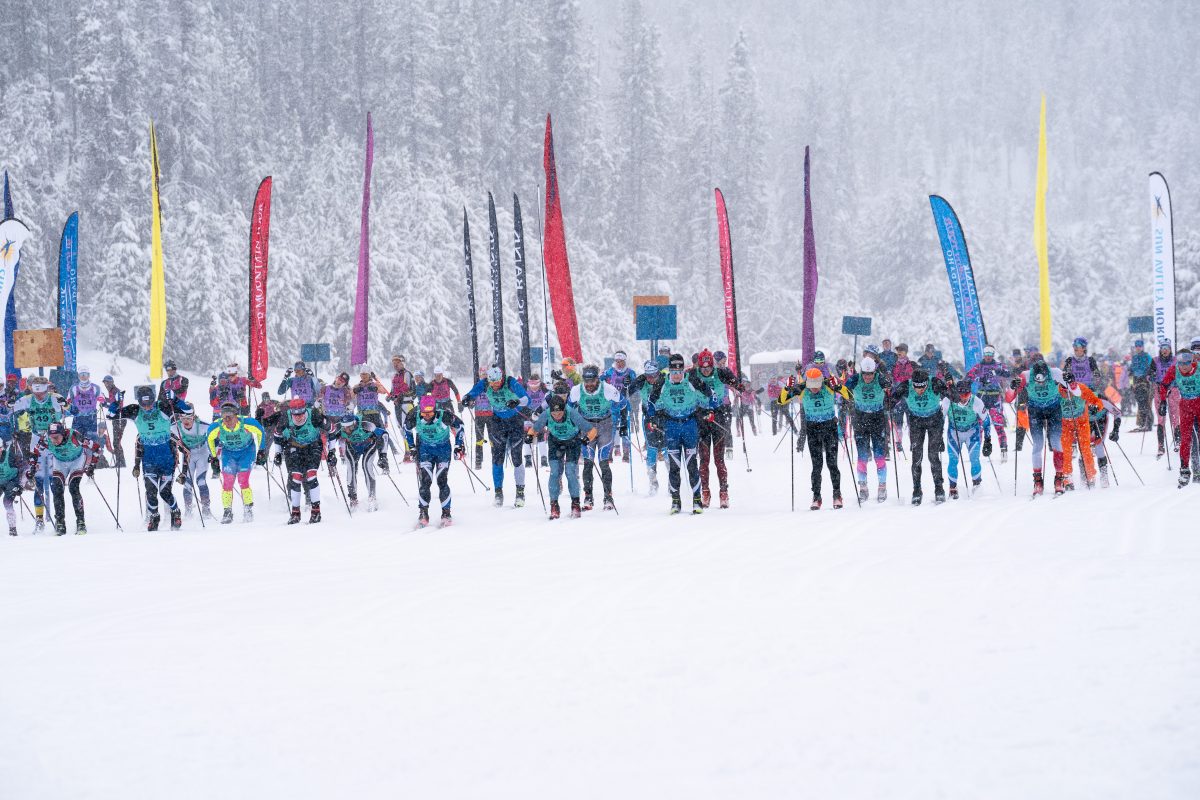“If you’re not pedaling, you’re going to fall over.”
Last month, the American Birkebeiner Ski Foundation sprang into registrants’ inboxes with a summer announcement: Ben Popp, Wisconsin native and ABSF Executive Director since 2013, had been elected President of the Worldloppet International Ski Federation. Replacing Finland’s Juho Viljamaa, Popp will serve a four year term, effective immediately.
He already has the regalia to prove it. The Federation’s gavel, a relic of the Tony Wise Era, has taken a circuitous path through Central and Northern Europe—but Popp’s election returns that artifact, and the Presidency, to the site of the Worldloppet’s establishment some five decades ago. “It’s literally inscribed: ‘Telemark Lodge, Wisconsin USA, Feb. 23 1978,’” Popp tells me.
To any skier who has made the trek from Cable to Hayward in the last eleven years, Popp cuts a familiar figure. Energetic, upbeat, and faster-paced than a sprint finish, he’s become a fixture of all things Birkebeiner—churning out trail-grooming update videos, fundraising initiatives, and ambitious projects ranging from a revitalization of the once-derelict Telemark Property to the Team Birkie, the Midwest’s professional racing team. Moreover, he’s brought the event safe to shore through three great calamities: the Canceled Birkie (politely remembered as “BirkieFest”; 2017), the Covid Birkie (2021), and the Manmade Miracle Birkie (2024).
It therefore comes as no surprise that Popp has assumed the Worldloppet Presidency with characteristic vigor—and lofty goals. FasterSkier spoke with Popp to discuss what they are, and how he plans to achieve them.
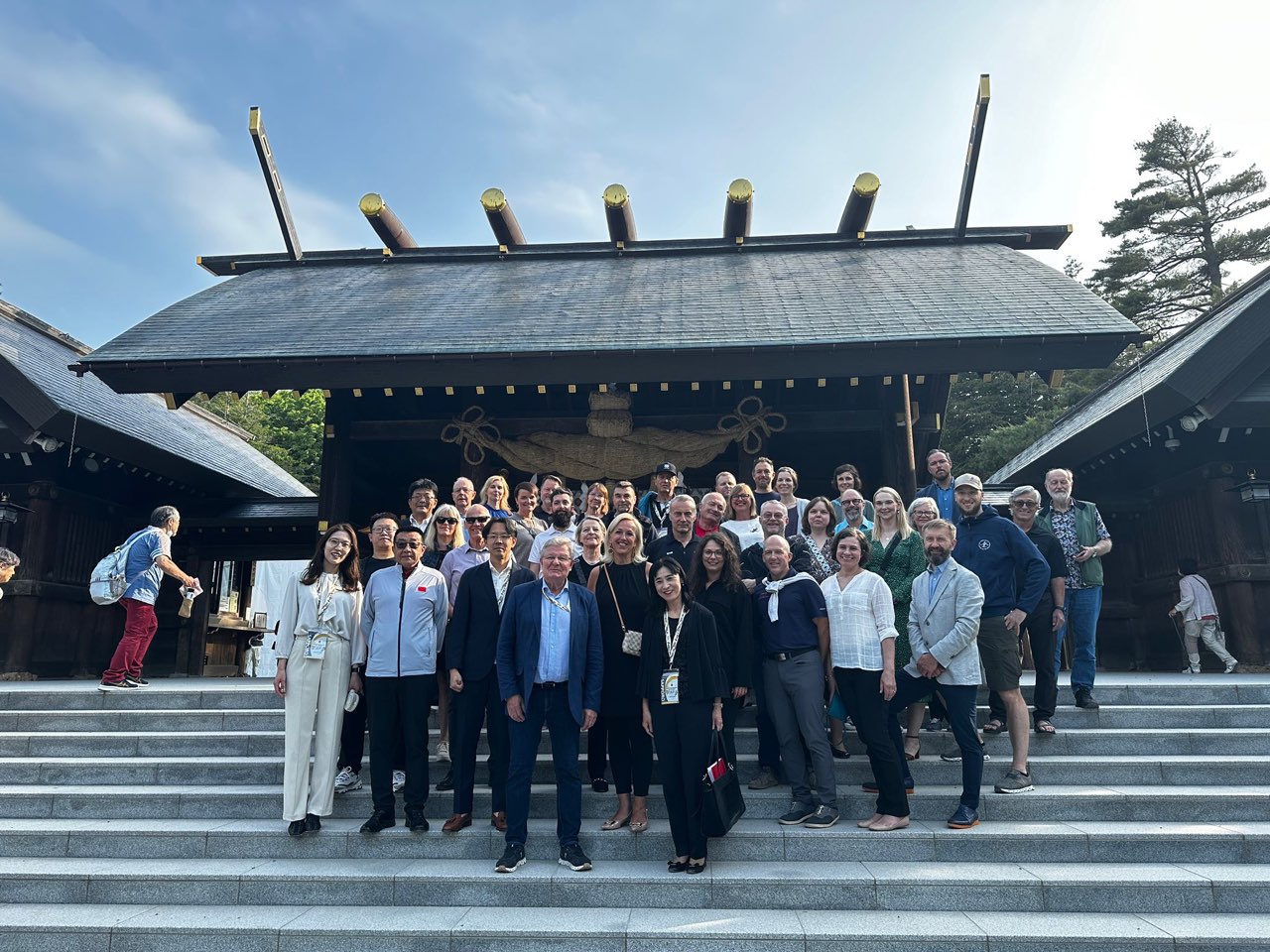
“What skiers needed back in 1978 is very different from what we need right now.”
Despite “representing popular skiing around the world,” the Worldloppet is a small operation, with two full-time employees headquartered in Tartu, Estonia. As Popp describes it, their efforts to coordinate ten events across five continents are “Herculean.” Countries tend to concentrate on their own ski federations, and on their respective flagship races. “It’s hard for them to focus” on the collaborative, international mission of the Worldloppet.
That’s where Popp sees himself differing from presidents past. When it comes to filling the Worldloppet’s two primary goals—providing support for member nations as they host “pre-eminent events,” and providing support for the more than 130,000 skiers who tackle Worldloppet races each year—the organization has gotten “really good at doing the same things over the years, and doing them really well,” like the Worldloppet Passport.
But Popp recognizes that “what skiers needed back in 1978 is very different from what we need right now.” It seems he views the Worldloppet of the past as catering to those already enamored with the sport and its signature marathons. The Worldloppet of the future can do more to expand the range and reach of popular skiing—even if that requires a course correction. “I know change can be really hard,” Popp says, “But believe it or not, I think the Worldloppet and global, popular skiing can be even bigger than FIS. Instead of focusing on getting a young skier from the U.S. to travel to Japan, we should be asking, ‘How can Japan engage its own young skiers?’”
Popp’s electors seem to agree: In fact, the Scandinavian delegations nominated Popp because of the athletic inroads he’s paved with the ABSF. “The Scandinavians know that the United States is seeing skiing grow in leaps and bounds, from the success of Jessie Diggins to almost 15,000 skiers at the Birkie. They know something’s going on here. They asked me, ‘Can you take it to the world?’”
An “absolute recipe for growth.”
What is Popp’s plan for growing cross-country skiing—for engaging new skiers at Worldloppet events?
In his own words, it’s a page from the NFL’s playbook: To get incoming athletes excited, “We need to marry skiing’s role models to everyday skiers. This is what the NFL does; it’s how they sell out stadiums every Sunday”—connecting the sport’s elite to their fans. The stars of the FIS World Cup are, currently, “just not part of what we think of as popular skiing.” Popp wants to change that—and wants the Worldloppet to take the lead “plugging in” Crystal Globe-chasers to the marathoning masses. “We can negotiate and create connections. We can get these role models to our races.”
He cites the Birkie’s recent collaboration with Jessie Diggins and Gus Schumacher (its 2024 champions) as proof of concept. The median age of a Birkie skier has fallen from 47 to 43.7, and young athletes are increasingly participating in ABSF events for a chance to meet these avatars of America’s Nordic ambitions. At this year’s Birkie Bash, an annual pre-race fundraising dinner, “half the room was kids, 18 or younger—they were there to see Jessie and Gus!” With the encouragement of the Worldloppet, the same could be true of New Zealand’s Merino Muster or Australia’s Kangaroo Hoppet (which Diggins has won multiple times): Popp sees more summer-training elites competing in these Southern Hemisphere marathons as a clear way to build enthusiasm in host nations.
Popp has his eyes on names from beyond the U.S. Ski Team as well. “I was talking with Haakon Klæbo last week, discussing how we can bring [Johannes Høsflot] Klæbo more into popular skiing.” Having charmed crowds of adoring young fans from Park City to Minneapolis, it should come as no surprise that the Norwegian phenom “wants to be engaged. He wants to be a role model and to bring more people into the sport.”
This involvement could go beyond racing Worldloppet events when the World Cup schedule permits, to incorporating these events into the World Cup itself. It’s happened twice before (La Transjurassienne in 2000 and the Birkebeinerrennet in 2002). Popp’s American Birkebeiner floated a bid for the 2024 World Cup schedule immediately after Minneapolis, with Main Street sprints on Wednesday and the Birkie itself on Saturday. A price tag pushing $3 million thwarted that effort, but Popp sees elites and popular skiers, tackling the same races, as the key to the longevity and financial viability of both worlds. “It’s a proven model. Look at the New York Marathon, the Boston Marathon. Who doesn’t want to run those—they’re iconic races, and you’re on the same course, the same starting line, as the best athletes in the sport. There will be concessions on both sides, and it will take some creativity,” but “if we can marry the popular consumers of skiing with the elite, it’s an absolute recipe for growth.”
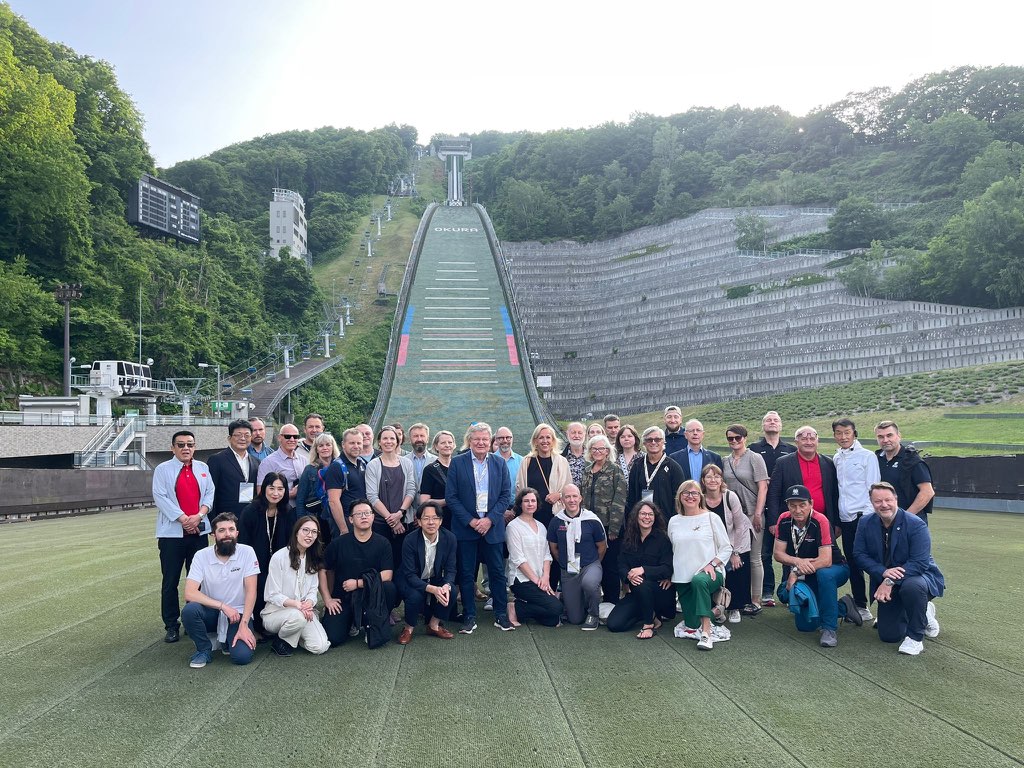
Sustainability and support from “the hub of the wheel.”
Popp’s new direction for the Worldloppet goes beyond his hopes of exciting wider audiences. He sees the organization facilitating resource and knowledge-sharing between world-class events that have, thus far, largely remained “in our own unique silos. We’ve all learned through trial and error. But we haven’t necessarily come together as a group.” A unified timing and registration system, for example, has seemed like a phantasmic “pipe dream on paper,” but each race is “spending an enormous amount of money on data collection, registration, and data storage.” In addition to reducing costs, the data could be leveraged to secure event sponsors. While the Worldloppet cannot be “the whole wheel,” it can be “the hub of the wheel”—a central source of direction, activity, and coordination around which individual races organize, and around which skiers structure broader cultural experiences.
Snowmaking is another prime example. This year’s “Miracle Birkie” took place on 10k of man-made snow; the 2024 China Vasaloppet was on 25k, hand-moved to the course. Fed by the guns of eight local alpine resorts and maneuvered into place by the Italian National Guard, the Marcialonga has been almost entirely on man-made snow for the last decade. Other events may not have that infrastructure—but they’ve developed their own strategies for coping with low snow that the Worldloppet can help systematize. Trails can be manicured in the off-season to maximize their ski-ability, even with minimal coverage; Norway and Switzerland have perfected long-term snow-storage with cement basins, drains, and coverings. Each nation’s Worldloppet race “wants to put on an amazing experience. That means we have to be the best at what we do,” even in a warming climate.
It’s with respect to climate that Popp also sees a distinct role for the Worldloppet. This is despite his recognition that there’s pronounced tension between the organization’s globetrotting ethos and any desire for more sustainable practices. Reusable gear bags—of which the ABSF has sold over 20,000 since 2017—could be one avenue for promoting conservation. So could carbon offsets, or broader opportunities for group travel to race events, including through partnerships with independent, curated trip coordinators. But the goal, Popp says, is to transform every Worldloppet skier into “an advocate, and to get them to get others to be advocates” for “green futures.” Telling the story of the reusable bag, or of a mass-transit journey to the start line, can create a network of climate-conscious athletes. While there’s “a long tail on that horse, we have to start somewhere,” Popp says. “We can’t get paralyzed with ‘what-ifs.’ We’ll get nowhere.”
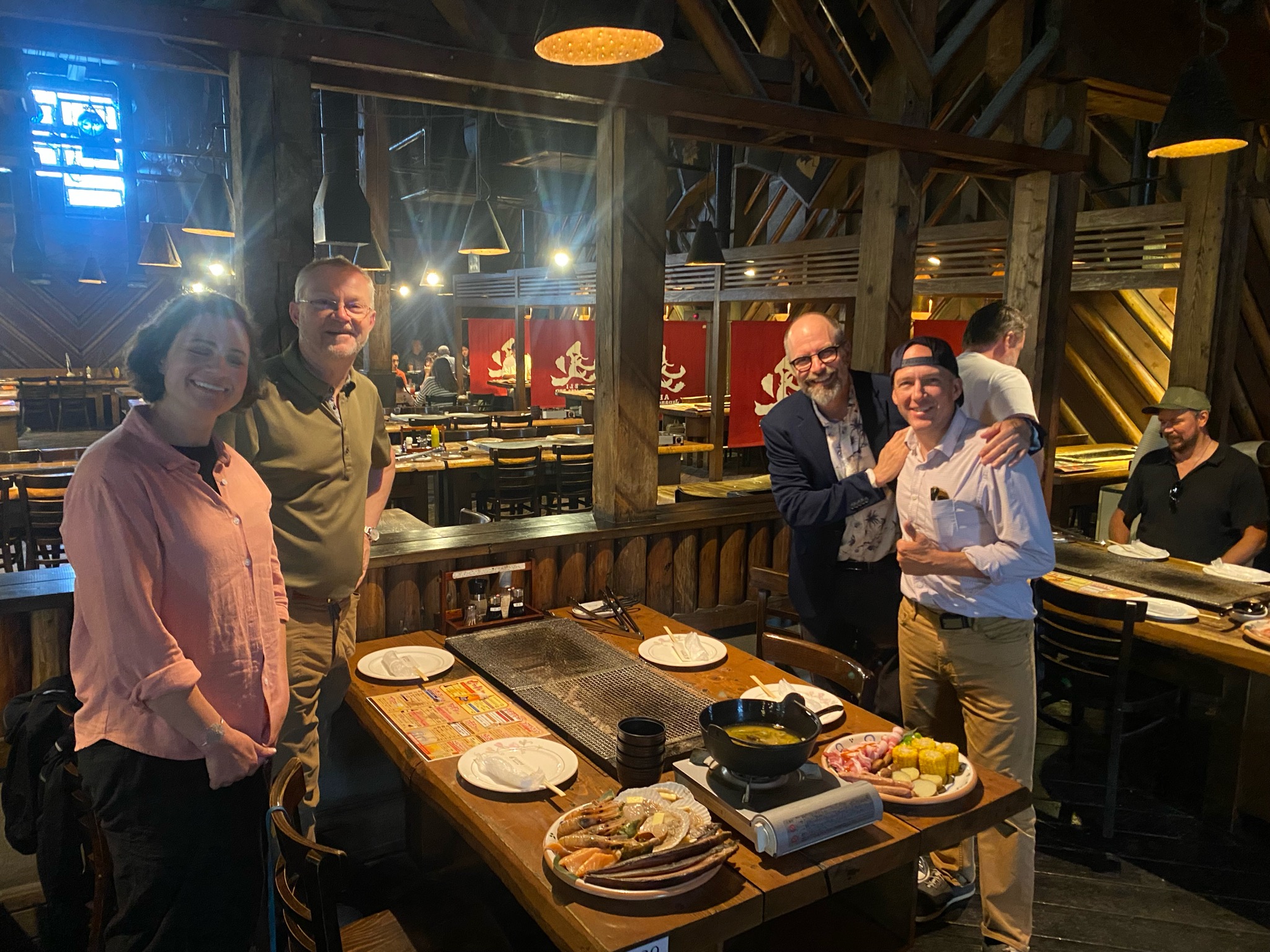
Pedaling ahead.
Reflecting on his 11 years at the head of the American Birkebeiner, Popp is approaching his four-year presidency with an ambitious vision for the Worldloppet. “The Birkie has an amazing, storied history, and it’s been super successful.” But directing one of skiing’s signature marathons—let alone an international federation of such events—is “like riding a bicycle. If you’re not pedaling forward, you’re going to fall over. The challenge is to remain relevant.” What the Worldloppet “has been doing is awesome, and we have a lot of people that love skiing,” but the organization needs to “take a critical look and better evaluate whether we are doing the things that allow us to grow.” This will require closer dialogue with athletes, engagement with elite skiers, and coordination of FIS’ Popular Skiing Subcommittee, where Worldloppet representatives occupy a “huge majority” of the 20 seats. Popp expects a “day-to-day challenge.” But, “I think it’s worth the time and effort because we can have a real impact on global skiing.”
Ben Popp will continue to serve as Executive Director of the American Birkebeiner Ski Foundation. FasterSkier thanks Popp for taking the time to speak with us about his new role at the Worldloppet International Ski Federation.
Luke Dykowski
Luke Dykowski is an alumnus of the University of Minnesota Nordic Ski Club ‘22, and is the Founder and Nordic Coordinator of the Midwest Collegiate Ski Association. He is currently a law student at Georgetown University.

